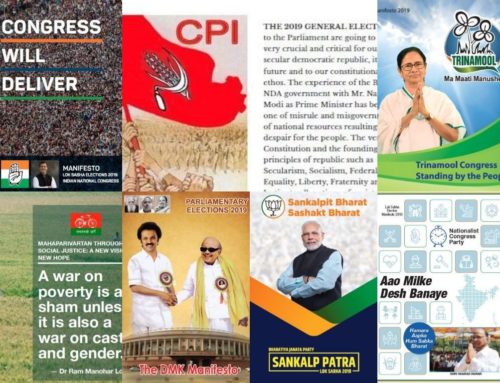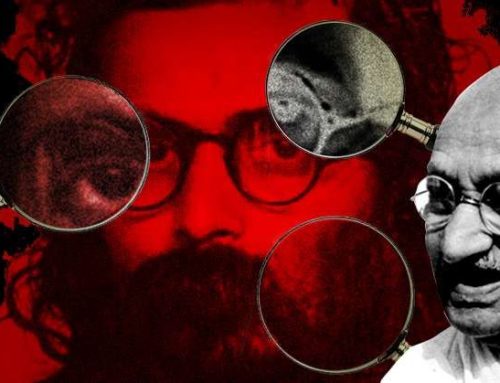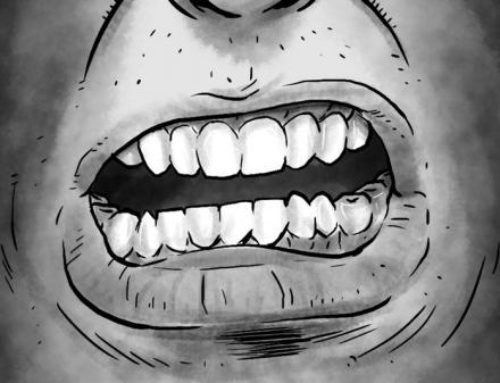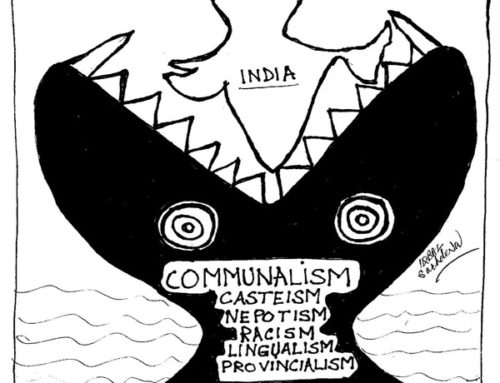Emergency Then and Now
Neha Dabhade
(Secular Perspective July 16-31, 2016)
The Bharatiya Janata Party (BJP) often accuses its political opponent, the Congress party of imposing emergency in India in 1975. Recently on the 41st anniversary of emergency, Kiren Rijiju, Minister of State for Home Affairs, said that 26th June must be observed as anti-emergency day. The Prime Minister, Narendra Modi added, “Do you remember June 25-26, 1975…it was the darkest night for democracy. Democracy is our strength and we will have to always make our democratic fabric stronger” (Business Standard, 2016). It is indeed true that emergency was the darkest and most condemnable period for democracy. But the question is whether or not India is facing the horrors of an undeclared democracy today? Mr. L. K Advani, a BJP veteran himself cautioned that another emergency in the future cannot be ruled out. “At the present point of time, the forces that can crush democracy, notwithstanding the constitutional and legal safeguards, are stronger,” he pointed out last year (Mishra, 2015).
Emergency in 1975
The then Prime Minister, Indira Gandhi imposed Emergency under article 352 of the Constitution that lasted for 21 months and is considered a blot on Indian democracy. Threat to national security and deteriorating economic conditions were cited as reasons to impose emergency. In reality, Emergency was declared by Mrs. Gandhi to consolidate her political power and eliminate political opposition. Emergency gave her total power and opportunity to function in an authoritarian manner. Democracy was endangered. This, on ground, spelt taking away of fundamental rights- freedom of expression, freedom of life and liberty, freedom of association. Media was under strong censorship where only views approved by the government were allowed to be printed. Same was the case for books and journals. Journalists, academicians and thinkers were threatened and intimidated if they dared to criticize the government policies or express a view that differed from that of the government’s. Political opponents were arbitrarily detained and imprisoned under the Maintenance of Internal Security Act for political vendetta on a wide scale. This resulted in a society where fear was widespread. The implications of emergency mean control in the hands of the executive at the centre to suspend fundamental rights of the citizens.
In a nutshell, Emergency essentially meant- censorship and muzzling of voices and different perspectives that is plurality of thought, arrests of political opponents- use of State’s coercive power and finally striking fear in society in general. The elections that ended the emergency reinstated faith and assurance in India’s political democracy and proved its resilience. However would it be correct to assume that the worst is over and India will never experience the horrors of another emergency? Are there no arbitrary detentions today? Is there no censorship of films, books or news? Is there no atmosphere of fear? Are fundamental rights not infringed upon today? The plight of writers, film makers, Dalits, minorities, Adivasis foregrounds a discussion on this undeclared emergency.
Freedom of expression curbed through censorship
Censorship of media amounts to infringement of the right to freedom- freedom of choice and expression. A progressive society thrives on ideas and plurality of perspectives. In a democracy, intelligentsia must have space for expression. However censorship aims at a conformist society. The hardliner Hindu organizations in India have been systematically silencing voices of rationality. It doesn’t stop at that. The author of the work is threatened and intimidated into submission, spelling an end to new ideas. For instance, Tamil writer Perumal Murugan was forced to give up writing after his book ‘One Part Woman’ was published. He was attacked by Hindutva organizations and caste based organizations which took objection to the book which narrates the story of a childless couple and indicates that sexual intercourse between a married woman and another man outside the marriage was permitted in ancient India to beget a child if the couple had problems conceiving a child within the marriage. He was forced to write his own obituary as a writer on Facebook and also pressurized to withdraw his book from the market (BBC News, 2015).
While the above instance reflects that writers can be muzzled for their views which locates women in active agency and free from societal norms and stigma, caste is still a reality in India, which will remain-so till Dalit intellectuals are muzzled for challenging caste oppression. Dalit writer Huchangi Prasad in central Karnataka was threatened and beaten up by right wing activists for his alleged “anti-Hindu” writings and vermillion was smeared on his face while he was told that he was born a Dalit due to the sins he had committed in previous birth. He wrote a book called ‘Odala Kichchu’ which speaks against caste system in India (Indian Express, 2015).
Colleges and Universities which are centres of learning and supposed to introduce students to varied perspectives are now gradually being controlled by bodies like ABVP and VHP. The result is an assault on academic freedom. The Akhil Bharatiya Vidyarthi Parishad (ABVP), the students’ wing of the BJP, disrupted the screening of a documentary on the 2013 Muzaffarnagar riots at Delhi University’s Kirori Mal College (KMC), allegedly for being “anti-Hindu”. In another incident, Lucknow University (LU) authorities expelled the Uttar Pradesh president of All India Student’s Association (AISA) — the youth wing of Communist Party of India (Marxist-Leninist) for organising a talk on ‘Love Jihad’. The talk was disrupted by members of ABVP when CPI (ML) Politburo member Kavita Krishnan was delivering her address. She was also manhandled by ABVP workers. In Rajasthan, following a representation by the ABVP and the RSS, an FIR was filed against Prof. Vohra by the Rajasthan Higher education minister Kalicharan Saraf for his views about Hindu Gods during a seminar, which did not go well with the RSS and ABVP.
Creating atmosphere of fear
The above goes on to demonstrate that any view which has a different position than the ideology of the State is ruthlessly crushed. When ideas are so brutally stifled it leads to an atmosphere of fear and insecurity. Non-state actors in collusion with the state have been deliberately creating an environment of paranoia and threats which results in shrinking of democratic spaces. Three powerful tools have been used to wreck fear in the society- the beef ban, propaganda against ‘love jihad’ and defining ‘true’ nationalism. It is no surprise then that an innocent man in Dadri is lynched by a mob upon suspicion that he stored beef in his fridge. Similarly, Muslim drivers are hauled up and beaten up or killed, suspecting them of transporting or selling cows. This doesn’t only infringe the freedom of choice in terms of food habits, but leads to particular communities feel threatened. The consequences are life threatening.
At Hyderabad University, young scholar Rohith Vemula was compelled to commit suicide when he was slapped with false cases by the University management. He and Ambedkar Students Association opposed ABVP activities on the campus. Rohith was part of the group that organized a rally for protesting capital punishment to Yakub Memon and the rally to protest the disrupting of film screening of ‘Muzzaffarnagar Baki Hai’ by ABVP members. He is called ‘anti-national’ by ABVP and University management (The Hindu, 2016). What perhaps stirred the hornet’s nest and fed into the debate on nationalism were the charges on JNU student, Kanhaiya Kumar of sedition and the attacks by ABVP students for ‘anti-national’ slogans. ABVP went as far as allegedly announcing a reward of Rs. 5 lakhs for anyone who cuts Kanhaiya’s tongue or shoots him down! This comes after the attack on Kanhaiya in the court premises in Delhi (Times of India, 2016). Similarly JNU was called a den of anti-nationals and its teachers banned from delivering lectures in other campuses (Tripathi, 2016).
There is a palpable atmosphere of fear in the country after the murders of renowned writers and rationalists, Narendra Dabholkar, Govind Pansare and Kalburgi. The tardy investigation in these murder cases, even after substantial time has elapsed since their killings in broad daylight, it sends a message of foreboding. Shockingly, their killings are cited as examples to intimidate other writers. Playwright Girish Karnad has been threatened he would meet the same end as murdered writer MM Kalburgi for demanding renaming of the Kempegowda International Airport after Tipu Sultan (Times of India, 2015) . Senior journalist Nikhil Wagle has been getting threats from right-winger Prasad Attavar from Sanatan Sanstha. Prasad Attavar posted on his Facebook account a message saying that those mocking Hinduism would die like MM Kalburgi. Prasad Attavar is the former Sri Rama Sene district President, who is also the accused in the pub attack case in Manguluru in 2009 (The Hindu, 2015).
The emergency in 1975 banned institutions, organizations and political outfits to crush dissent. Today the State is doing the same by coming down heavily on organizations working for human rights of the marginalized or monitoring and questioning state policies. The State has resorted to banning or cancelling the registration of licenses of such NGOs citing FCRA norms. Greenpeace and Sabrang Trust are two such examples amongst many. This crackdown on NGOs has achieved both, censorship and also instilling fear in the minds of those who will challenge state policies. This amounts to gradual elimination of institutions put in place for ensuring accountability of the State since civil society organizations and international human rights bodies work as watch dogs of rights demanding that states take proactive measures to secure rights of the marginalized.
The third tool to instill fear and polarize communities is the propaganda against inter-religious marriages or the derogatory term coined by Hindutva groups popularly known as ‘Love Jihad’. VHP and Bajrang Dal has time and again raised this issue to reach out to Hindu families and exhorted them to ‘control’ the girls in their family to ensure they are not ‘trapped’ by Muslim men. And Muslim youth are beaten up or intimidated so that they don’t pursue the Hindu girls for marriage. What this actually amounts to is that two adult individuals exercising their right to choice and wanting to marry are hounded and brutally prevented from getting married or being in a relationship. This is the worst form of assault on personal liberties. Paranoia and hysteria are created around such unions to such an extent that families and communities on a whole face violence. The slightest signs of inter mingling sets alarm bells ringing and vigilante actions. A Muslim youth was tied to a pole and beaten up by Bajrang Dal members for being together with a Hindu girl, his colleague who he claimed to be giving a ride (Indian Express, 2015). In another incident, Hindutva activists threatened Ashita and Shakeel when they decided to get married in Mandya. Both the families were happy about the planned wedding and had to seek police protection (Times of India, 2016).
Freedom to life and Liberty
One of the most fearsome aspects of the emergency is facing the might of the State in its most naked form that is its power to make arrests and detentions. The arrest and torture of Adivasi activist Soni Sori and other Adivasis like her who are fighting for land rights, is a grim reminder that the State wont shy away to lock up vocal opponents. In another incident, Professor of English in Delhi University, G N Saibaba was arrested and imprisoned for 14 months on charges of having Maoist links. He was campaigning against operation Greenhunt and fake encounters of Adivasis.
There are scores of Muslim youth who are under trials in prisons across India. Though Muslims comprise only 14.2 percent of the total population of the country according to a recent census data, they constitute 26.4 percent of the prison population as per statistics (Premkumar, 2015). Not only Muslims but Adivasis are killed in extra judicial executions. This concern was also echoed in the Amnesty report (Amnesty International, 2016). It is ironical that while marginalized community are so unapologetically stripped off their life and liberty, there is no punitive action taken against Hindutva leaders like Yogi Adityanath and Sadhvi Prachi when they openly instigate hatred and enmity against other religions and communities. Their hate mongering and hate speeches are trivialized by terming these Members of Parliament, sworn under the Constitution, as fringe elements. They are not punished or publically condemned or pulled up.
Conclusion
All of the above indicates that fundamental rights in India are infringed unabashedly even today. The difference between the emergency of 1975 and this undeclared emergency is that while then the state used its police and security forces to curb fundamental rights and democracy, today the state by its collusive inaction against vigilante Hindutva groups is violating fundamental rights. While emergency in 1975 was declared under article 352 which is mentioned in the Constitution and also had constitutional remedies, this present emergency has no basis in the constitution and more difficult to eradicate since its driven by non state actors with a discriminating ideology. In the face of this threat to democracy one needs to ponder on the sentiment of the PM of having a stronger fabric of democracy. The way ahead is fraught with many formidable challenges but it will take sustained vigilance and struggle on part of the people of India and civil society organizations to demand for accountability and rule of law from the current political dispensation. This is possible by exploring legal means and approaching the judiciary. Citizens must be made aware about the rights enshrined in our Constitution and how there are forces which want to violate those rights. Adult franchise is a significant feature of Indian polity and must be practiced by the citizens to make their voices and choices heard.
————————————————————————–
Centre for Study of Society and Secularism
Mumbai
E-mail: csss2work@gmail.com






